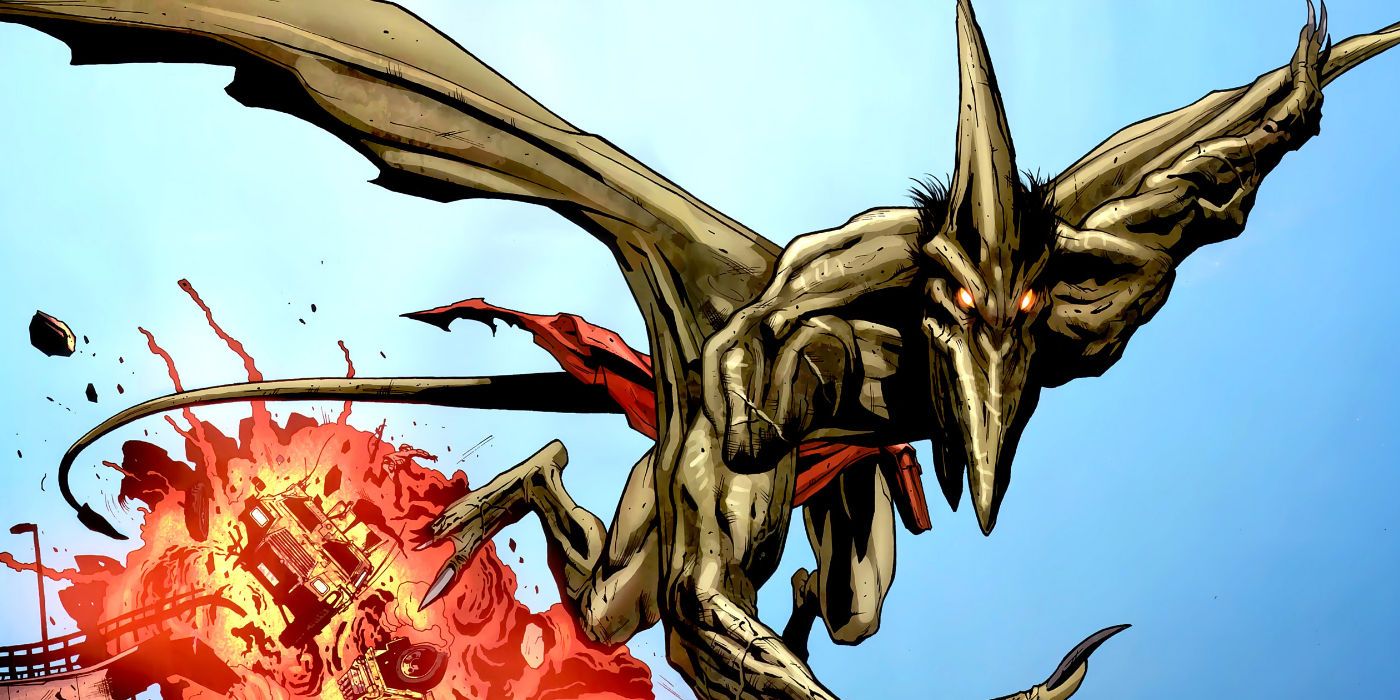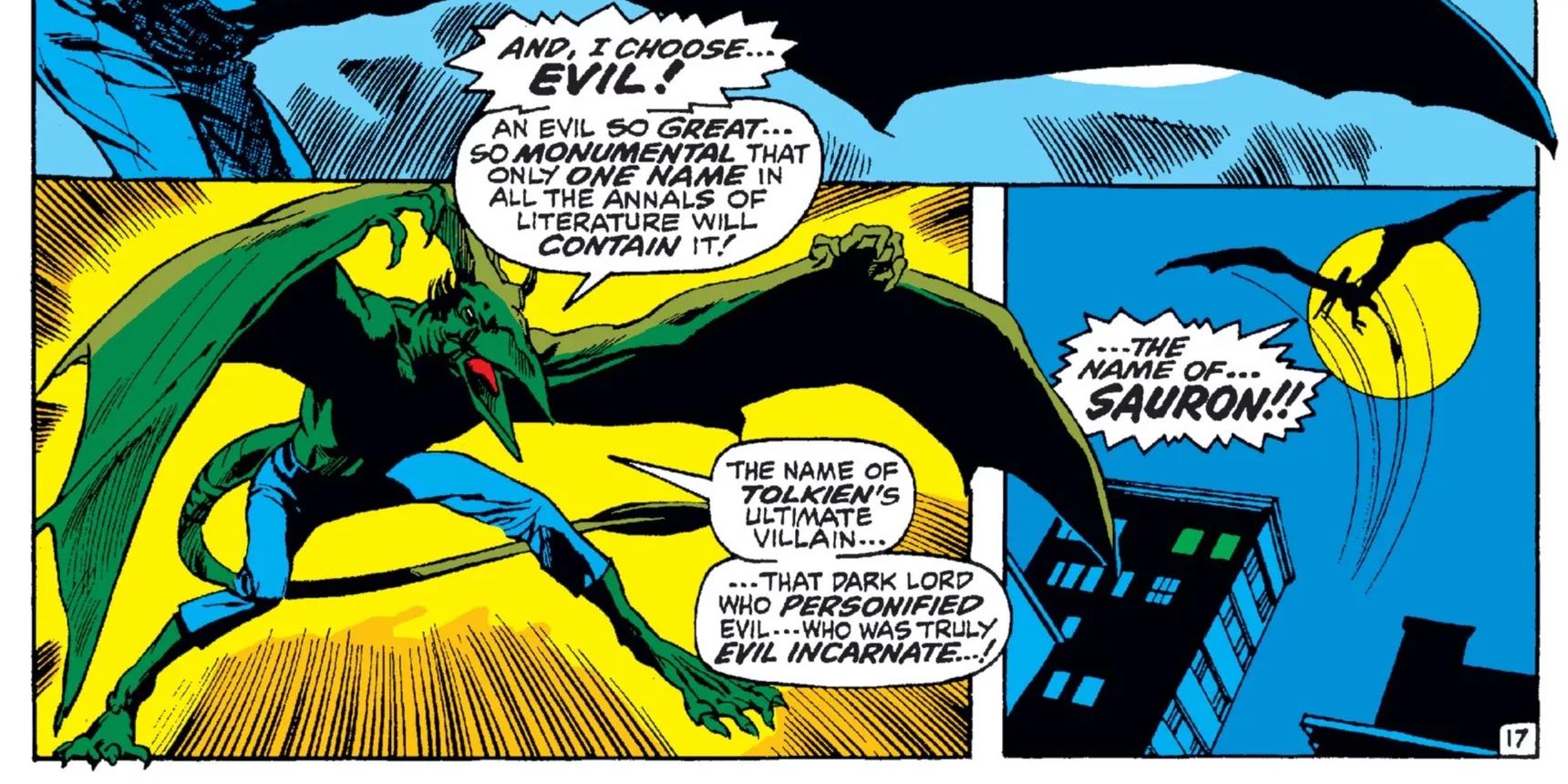Comic book censorship has an interesting history. Back in the day, a sustained moral panic prompted publishers to codify a strict set of publishing standards, leading to the creation of the Comics Code Authority, which approved or rejected comics according to "moral" guidelines. Of course, writers hate being restricted, and so the code led to some pretty interesting narratives and characters designs, the result of creators' attempts to circumvent the Comics Code Authority. A perfect example would be Sauron, the were-pterodactyl villain of the X-Men.
Dr. Karl Lykos used to be the son of an explorer's guide, when he was bitten on an expedition by mutant pterodactyls. This granted him the ability to drain the life-force of other living creatures. As he grew up, he became a gifted physician and geneticist, first appearing in X-Men #59-60 in 1969 when the X-Men needed his help to treat Havok. However, when he couldn't help but absorb Havok's mutant life-force, Lykos turned into a pterodactyl-like monster with hypnotic powers, while still retaining his intelligence. He took the name Sauron, intentionally naming himself after the dark lord from J.R.R Tolkien's Lord of the Rings books, and fled to the prehistoric realm of the Savage Land. From then on, when mutants were nearby, Karl would become compelled to steal their life-forces, and he would transform back into Sauron. But what does this have to do with the Comics Code?
What's arguably even more interesting than a were-pterodactyl in its own right is that Lykos wasn't originally meant to be a dinosaur. Initially, when creators Roy Thomas and Neal Adams were coming up with the character, Lykos was meant to be a bat-like energy vampire. However, they were forced to shift gears when concerns were voiced that Lykos' appearance might go against the Comics Code Authority's rules against the depiction of vampires and werewolves. Thus, Thomas and Adams created the workaround by making him a were-dinosaur instead, the pterodactyl being the closet thing they could come up with that closely resembled a bat. As such, they also shifted plans to have him based in the Savage Land as well as having him take the name Sauron (for the equal reasons of the LOTR villain and the fact that saurus is Latin for lizard).
For this reason and plenty more, The Comics Code Authority is incredibly interesting, as it's responsible for so many wild methods of circumvention on the part of comic creators. The CCA was a means of self-regulation for the comic book industry which was initiated in the '50s due to fears that comic book materials would have negative influences on the minds of children. However, thanks to the CCA, publishers could send in their comics for review, and if they met the guidelines, the CCA would add its seal of approval, thus easing the minds of parents and consumers. It soon became common practice by distributors to only handle those comics that bore said seal. As a result, some characters (like Sauron) were created by writers and artist who still wanted to tell the stories they wanted to tell, but found ways to get around the regulations.
It should be noted that over time the Comics Code Authority was undermined and abandoned, allowing Marvel to fill their Universe with as many vampires and werewolves as they liked. Even so, that doesn't mean characters like the X-Men's enemy Sauron have gone away. He's now a part of the Marvel Universe, here to stay in all of his weird and undeniably odd glory.


